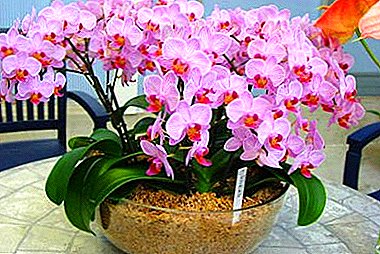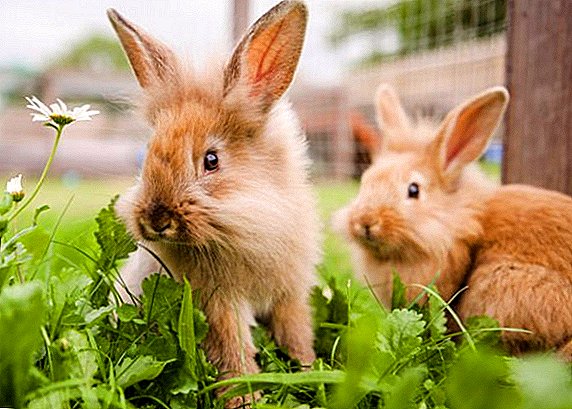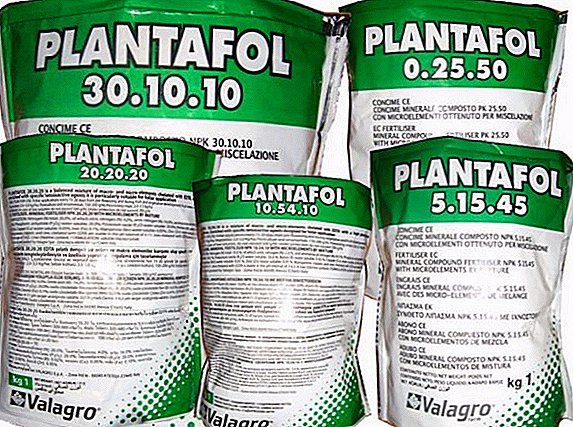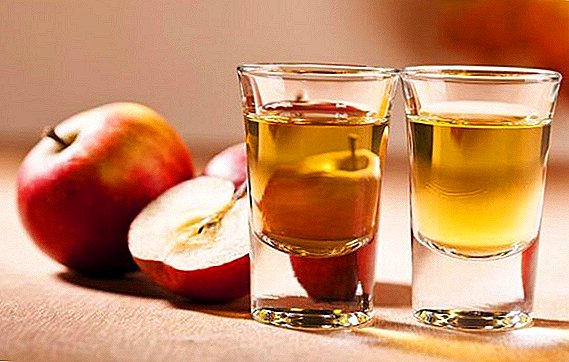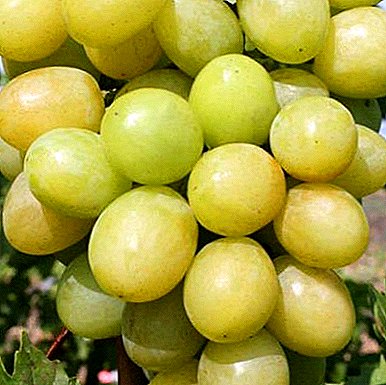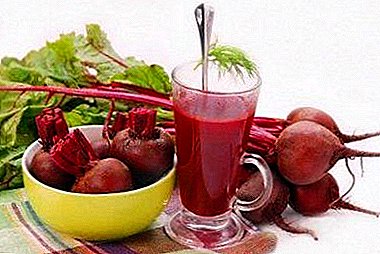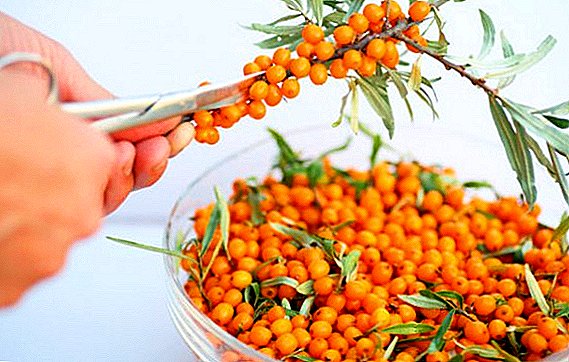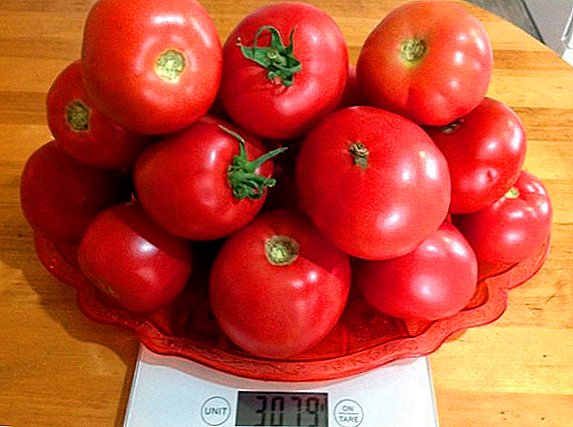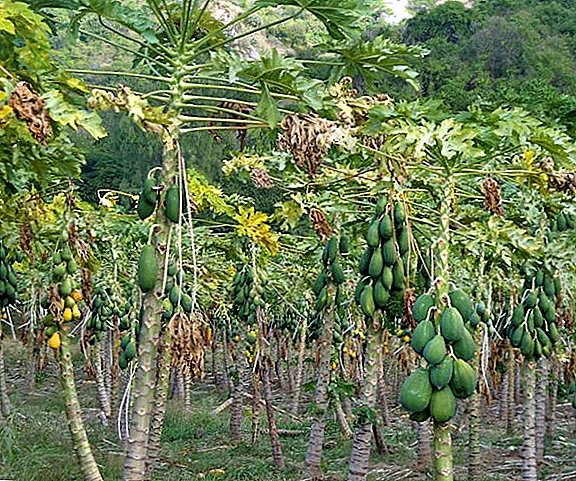
Pawpaw, which is also called a banana tree, is a bichromatic flowering plant that looks like a tree, from which it received such a name. A lot of people grow it on country sitesHowever, you can also please yourself by sheltering on your home window sill. Let's figure out how to plant this plant and how to care for a banana at home.
Biological features
This fruit crop is originally from America, it reaches a height of 12 meters, but often its growth is specifically limited. Growing azimina on the street, it is cut to 6 meters, at home - to 1-2 meters. The tree has beautiful bark and foliage that forms plants in a decorative pyramid. The size of the leaves can reach 30 cm, and the size of flowers resembling bells is 4 cm. The flowers near the tree can have a red or purple color. Azimine fruits have a rounded oblong shape and can reach in weight of 800 g. The color of fruits changes as they ripen - from light green at the beginning to lemon yellow and dark brown at the end.
Did you know? A banana tree is considered the largest fruit tree in the United States.Outwardly, they resemble bananas, because the tree has received such a name. The pulp of a ripe fruit has a whitish-yellow color and, in structure, resembles butter. Fruits can be consumed fresh, made from them syrup or marmalade, confectionery. When the leaves of the pawpaw start to fall off, they acquire a bright yellow color, which adds to the tree positive decorative qualities.

Learn more about the beneficial properties of such exotic fruits as kivano, lychee, guava, feijoi, longana, and also papai
Events after the purchase of indoor copies
After the pawpaw seedling has been purchased, it must be planted. Pot for him choose a narrow and deep. Drainage is poured into it, then a small layer of sand, and then light, fertile and slightly acidic soil. The seedling is dug into the ground by 9-12 cm and covered with soil. After that you need water the plant with warm waterand when the earth gets a little dry, put some more soil under it.

Creating a comfortable environment and care tips
Growing paws at home is the same as growing any other plant. Despite its exoticism, all that the plant needs is timely watering and fertilizer, it is also necessary to choose a comfortable place for it and take care of the temperature at which the pawpaw can develop properly.
Important! When planting it is impossible to trample down the soil or compact it by any mechanical means due to the fragility of the seedling root system.
Place in the house and lighting
Up to two years, paw needs to be slightly shaded from direct sunlight. Because at such a young age, usually her put on the east or west windowand then moved to the south.
For the cultivation of a banana tree over two years, choose the brightest place in the house. Since the plant loves the light, for greater comfort in the winter, it needs an artificial luminosity. For this purpose, fluorescent lamps with high brightness.

In summer, the banana will feel good on the balcony, and in the winter it is better to move it into the room and put it on the floor next to the window. This plant does not feel comfortable in the draft, so you need to choose a place where it can not be.
Temperature
The optimum temperature for a tree will be about + 22 ° С, and in the winter it will be reduced to + 6 ° С for two weeks, and then kept within four months from + 12 ° С to + 15 ° С.
Did you know? The chemical composition of an azimine resembles a banana - it also contains a lot of sugar, vitamins C and A, and beneficial microelements (iron, potassium, magnesium, calcium).
Watering
Due to the fact that all parts of paws are very juicy and tender, watering should be carried out regularly. But it is very important not to overdo it with water, because in this case the root collar can rot, which leads to the death of the tree. You can periodically spray homemade banana tree with soft warm water.

Air humidity
Banana tree accustomed to moderately humid conditions. If the summer is very hot - above 30 ° C, you need to humidify the air with the help of special devices.
Learn how to grow pineapple, medlar, feijou, tangerine, jujube, at home
Top dressing
The plant is usually fertilized in May-June (during the period of active growth). Nitroammophos, various microelements and superphosphate are introduced into the soil. Also once in two weeks, a banana tree can be fed with solutions of mineral fertilizers. Organic fertilizers are well suited to banana pond sludge and manure.

Pruning
So that the plant does not grow excessively, its top is cut and form a bush in the desired shape. But trimming pavement is needed only for the decorative formation of the trunk, but also for sanitary purposes. The flowers and fruits of this plant are formed on last year's shoots, because every year it is necessary to cut off adult plants. This is done most often before the beginning of the growth period before sap flow - in early spring.
Important! In the first year of life it is not recommended to fertilize azimina.
Do I need special care in winter
Pawpaw - heat-loving, but frost-resistant plant. Maintains temperatures to -30 ° C. In the winter, he necessarily needs more light. In winter, in the dormant period, you need to water the plant much less frequently. Water for irrigation in winter should be at room temperature. Due to the heating in the winter in the apartments the air often becomes very dry, because you can periodically spray the plants. In winter, feeding is reduced to a minimum or not carried out at all.

Transplant rules
Because of the fragile measles system, you need to be very sensitive to transplanting paws. If there is such a need, you need to do it using the transshipment method in a larger container. Make the transplant process only in the spring. During this period, the banana tree is in a period of active growth and the plant after transplantation will get stronger much faster.
Flowering and fruiting
The plant will begin to bloom no earlier than 2-3 years of life, and produce fruits no earlier than 5-6 years of life. This usually happens in April and lasts up to 3 weeks. The fruits of the banana tree will be ready to eat at the end of the summer.
Important! It is impossible to allow complete drying of the soil in which the paw grows, in the winter period. This can lead to the death of the plant.Pawpow can not self-pollinated, insects and hummingbirds help her with this in nature. With a great desire to get the fruit, the owner of the plant can try artificial pollination, but the probability of obtaining fruit still remains small. Artificial pollination is carried out when the color of pollen becomes brownish, and it becomes loose. The tips of the pistils at this point should become sticky and have a glossy green color. Fruits at home can be obtained if you try to create the best conditions and properly conduct pollination.

Prevention of diseases and pests
Banana tree is weakly exposed to various diseases and pests, especially in home-grown conditions. The only thing to watch out for is the level of moisture in the soil and the room. If the ground is too dry or too wet, fresh air will not circulate in the room, there is a risk of stains on the foliage and root rot. In such cases, the plant choose a more comfortable place, pruned damaged foliage. If root rot appears, you need to transplant the plant. To do this, the roots are gently washed with water, trying not to damage the healthy areas, while removing the sick. From preventive measures, you can use watering a weak solution of potassium permanganate.
Important! Because of the large number of alkaloids, azimine has long been used as an emetic. A decoction of its leaves is diuretic. And drugs from the fruit of the plant are able to fight tumors and microbes.
Azimina will be a good decoration of the window sill of any apartment or house. But it can only blossom, develop and bear fruit only if it is properly looked after — choose a suitable place, competently approach irrigation and feeding, and also monitor the humidity of the air in the room.


